
Ghostwire: Tokyo is a special case of a game. Developer Tango Gameworks, known for the very good action/horror Evil Within 1 and 2, decided not to go for the easy path of a new sequel. Instead, they chose to build something completely new, unusual and with a unique personality, which is structured by borrowing heavily from Japanese legends and lore, which is by default bizarre. At least from the perspective of the Western world. Therefore, when we were informed of its existence about three years ago, we were quite happy to finally try something different from the usual. Only, in the end, the harsh reality is different from what we imagined.
If anything, the story of Ghostwire: Tokyo sounds interesting. Our protagonist is Akito, a young man who falls victim to a fatal car accident in the cosmopolitan area Shibuya of Tokyo. Just before he breathes his last breath, suddenly a thick fog sweeps over the area, wiping out all its inhabitants and flooding it with dozens of malevolent spirits bearing the name Visitors. At the same time, a spirit possesses Akito and without delay explains to him that they must work together for an ultimate goal. Which is it? The revenge of said spirit, with the informative name KK, on a masked man responsible for the fog and the disappearance of all the inhabitants, Hannya.
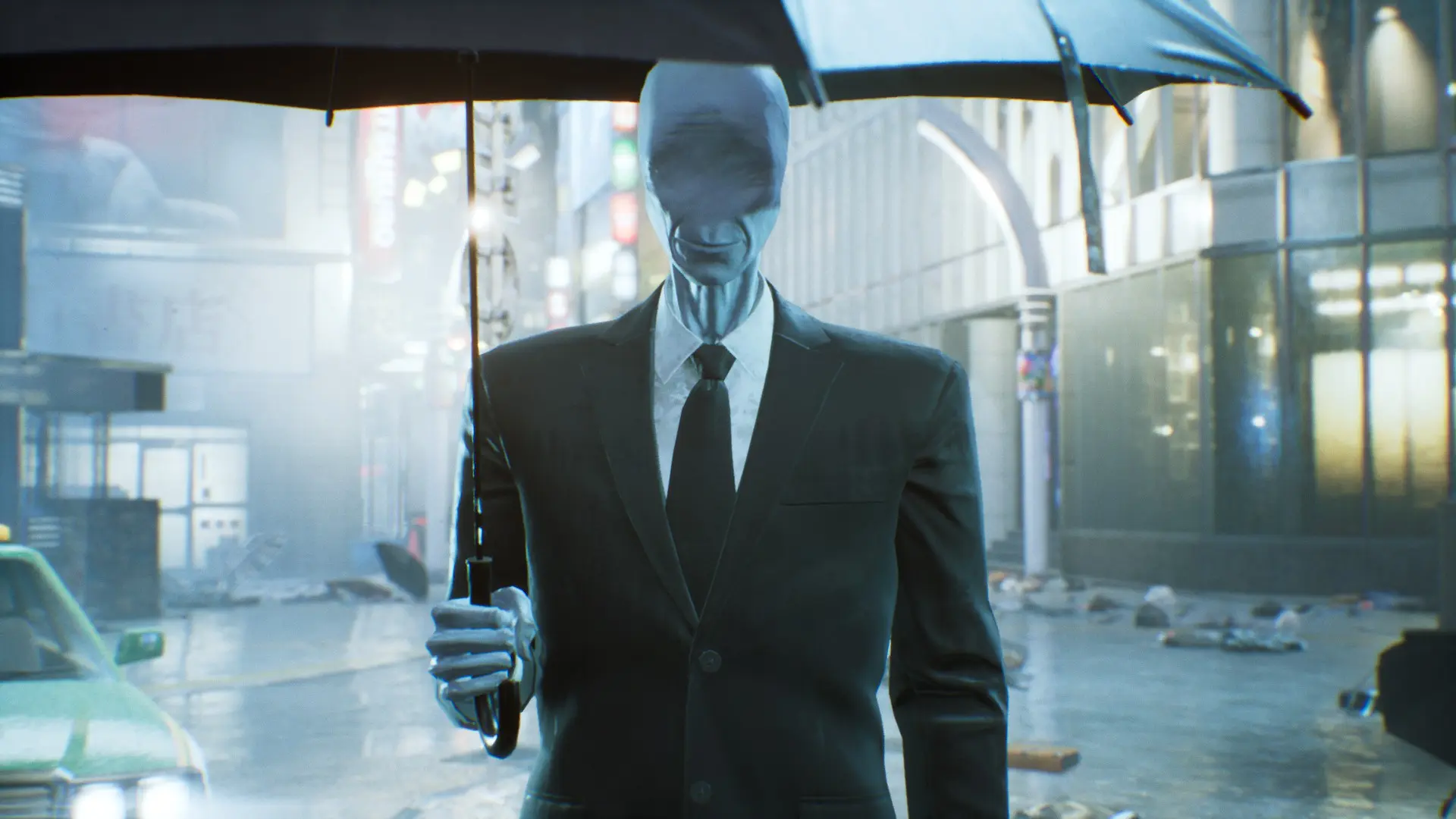
At first, Akito voices many strong objections to KK's authority, but he soon realizes that without him, he would not be alive right now and could no longer help his sick sister Mari, who is in critical condition at the local hospital. Therefore, the appropriate solution for both of them is to tolerate each other and ally themselves so that each can serve their own purposes. In essence, Akito provides the matter and KK the spiritual powers, which are not to be taken lightly.
Undoubtedly, this is a pretty good idea, which unfortunately suffers in implementation. The writing is average, as it does not delve into character's personalities, the Akito-KK relationship is not adequately covered, resulting in no emotional connection between the player and either of them, while the same problem is also found in the game's "bad guy", Hannya. Yes, we learn why he did all of this, but it leaves several questions unanswered, throwing yet another opportunity for a memorable villain into the bin.
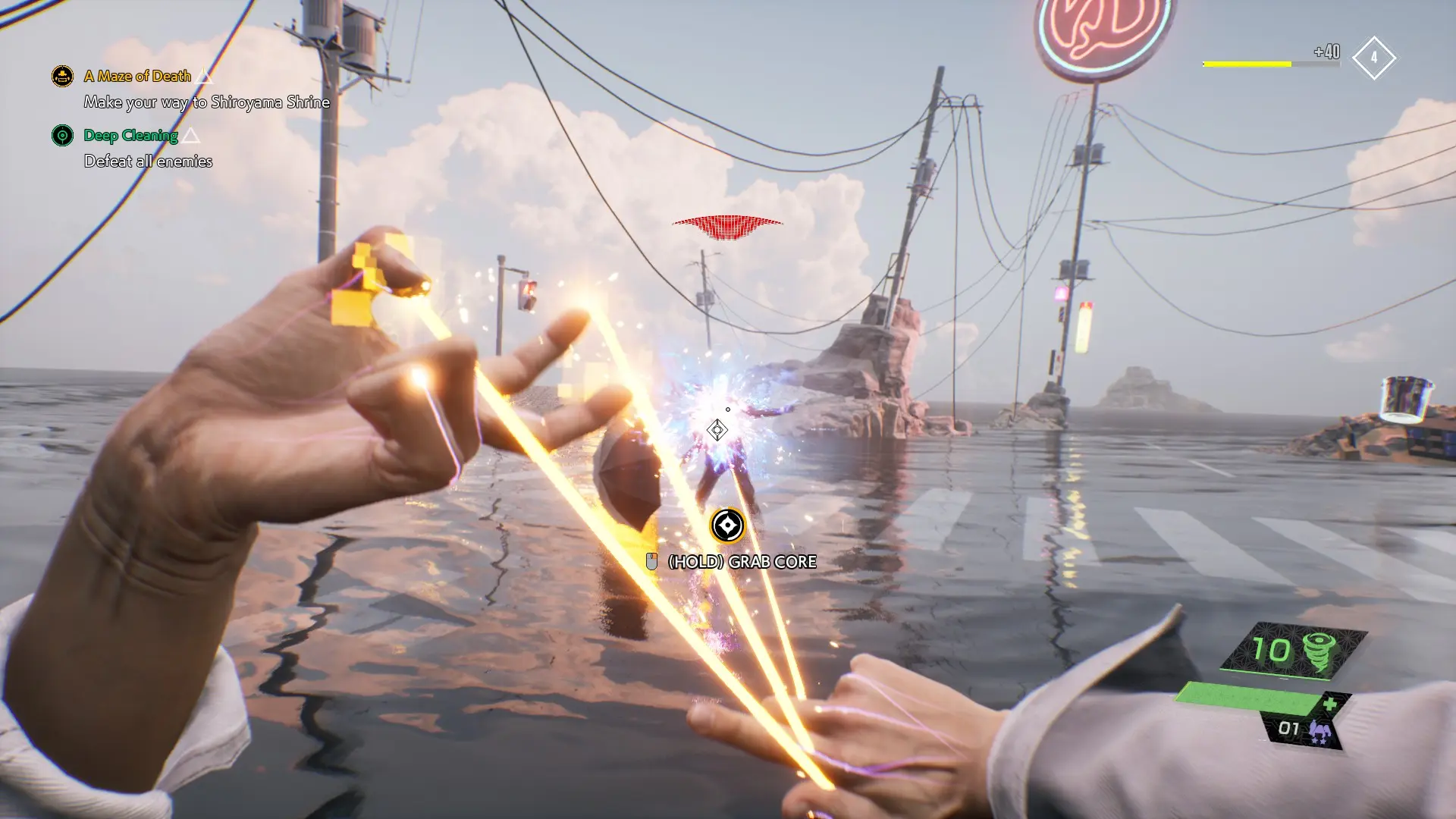
However, Ghostwire: Tokyo wins the day thanks to Shibuya's implementation. The city may be empty and inhabited by only a few Visitors, but it is nonetheless enjoyable both to walk through and to stare at. Thanks to the power of Unreal Engine 4, the visuals are one of the game's strongest assets, with the rainy urban environment creating strong feelings of abandonment, loneliness, mystery and horror, especially when indoors. This is where the game plays its tricks, creating some very imaginative settings, "playing" with our minds and seducing our eyes. I won't spoil it, but the missions set indoors are by far the best in the game.
Speaking of missions, we're still not clear on what Ghostwire: Tokyo is. In simple terminology, it's a first-person open-world action game that runs along the same lines as most open-world games you've played to date. The main difference lies in the fact that, initially at least, the game doesn't completely slack off, as most of the city is covered in fog, which is deadly to Akito's physical integrity, so it limits how far we can move. The only way to slowly clear the map is to purge some Torii Gates, which among other things unlock sub-missions, shops, points of interest and dozens of floating spirits, which we can absorb with a special gadget and then save by emptying them into phone booths! Does it seem strange to you? It shouldn't. After all, this is just one of the many strange things your eyes will behold. Imagine your surprise when you first visit a store and find that the owner is a hovering cat with two tails...
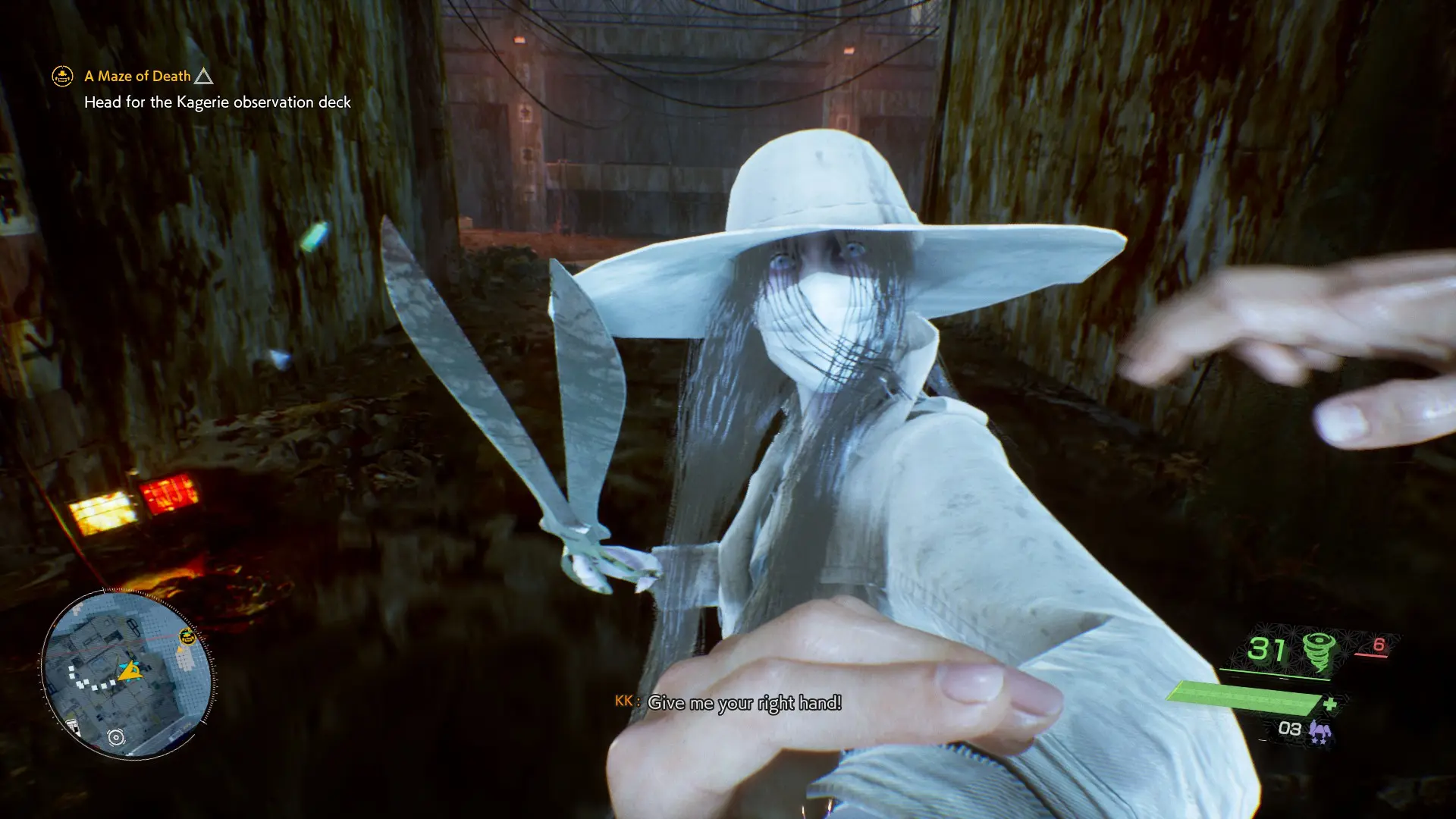
Of course, the main enemies of the story, the Visitors, are in a similar style. Although there aren't too many species, their design is both scary and funny: costumed drippy guys with umbrellas walking at a slow pace, headless school kids kicking around, and some more extraordinary ones like some well-dressed "ladies" with scissors or floating spirits with Samara-style hair. The way to deal with him lies in Akito's hands, which, thanks to KK, are lethal weapons.
So through KK, Akito can control three elements of nature: air, fire and water. In fact, they are three types of weapons that you would find in an FPS, which practically, reflects the way combat is approached. Air represents the simple, quick but not too strong hit, fire is very powerful but limited in "ammo" and is best for area of effect damage, while water is mostly preferred for close range. Holding down the attack button for a while and releasing it, then depending on the element used at the time, we unleash a stronger attack, ideal for difficult situations and bosses.
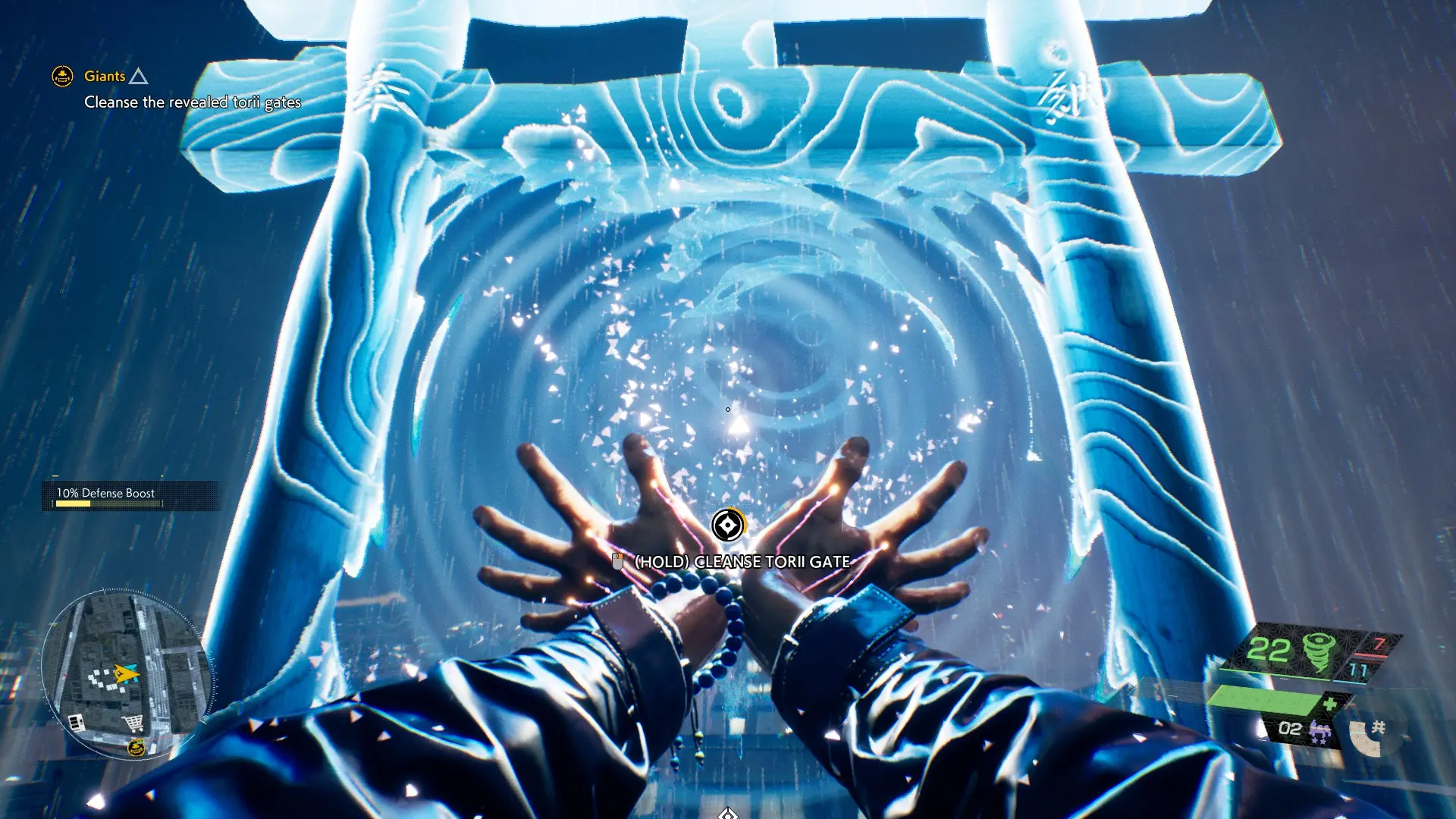
In addition to these, there is a bow, whose usefulness is debatable, as it is quite slow and with very expensive ammunition. Barring a couple of points where its use is mandatory, it's hardly going to be your first (even last I might add) choice against the Visitors. This is rather disappointing, as we quickly find that the implementation of the combat has little depth.
The reason is that the same pattern is always followed in all of them (except for the bosses): we smash enemies until the "core" they keep inside them is revealed, which we can then root out with spiritual threads or with our hands (for more experience points). So, combined with the absence of more elements of nature or powers, soon repetition begins to shout its presence loudly. Moreover, the little variety is also evident in the poor skill-tree, which usually includes upgraded versions of existing powers, so that in the first two hours of the game we have seen almost everything the combat system has to offer. We also wouldn't have minded at all if there was a dodge ability, as Akito is quite "heavy" and having a jump and a block button isn't enough in some boss-fights. The latter is no such a big deal, at least on the Normal difficulty level, as the boss fights aren't difficult at all once we realize what we have to do.
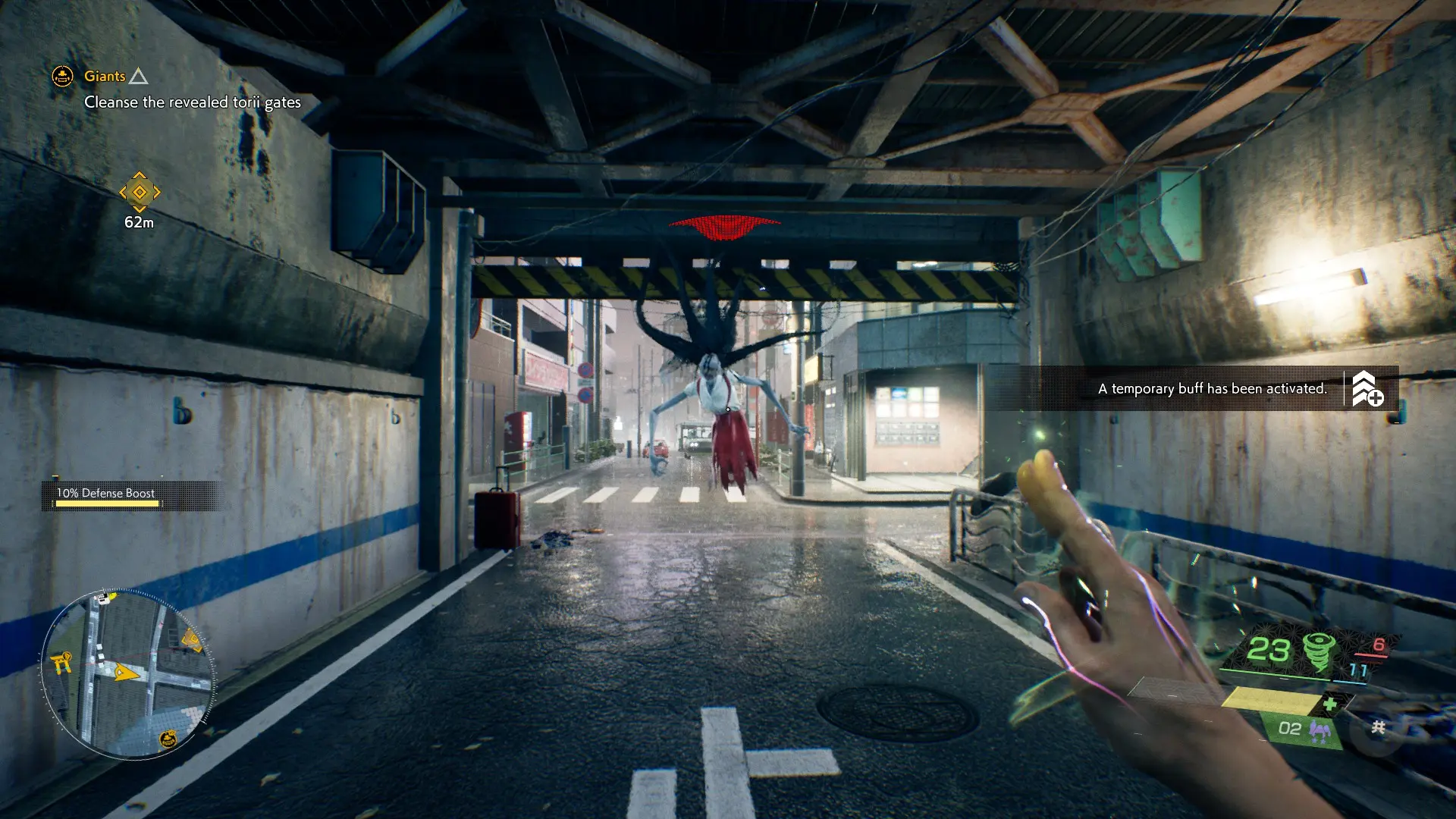
In general, the repetition of the action is also observed in the structure of the game, which includes few surprises, such as the talismans that function mainly as utilities. Most of the time is spent collecting spirits, purifying Torii Gates (especially in chapter 4, there more than plenty of them) and occasionally fighting Visitors, which are very easy to avoid if you're bored of eliminating them for the hundredth time. At least an attempt is detected to better implement side missions away from the ordinary, with several of them being clever, including small standalone daily stories worth experiencing. That's not to say that there aren't the typical fetch/collectible quests, dozens in number and capable of keeping us occupied for many more hours than the ten or so required to complete the game's main questline.
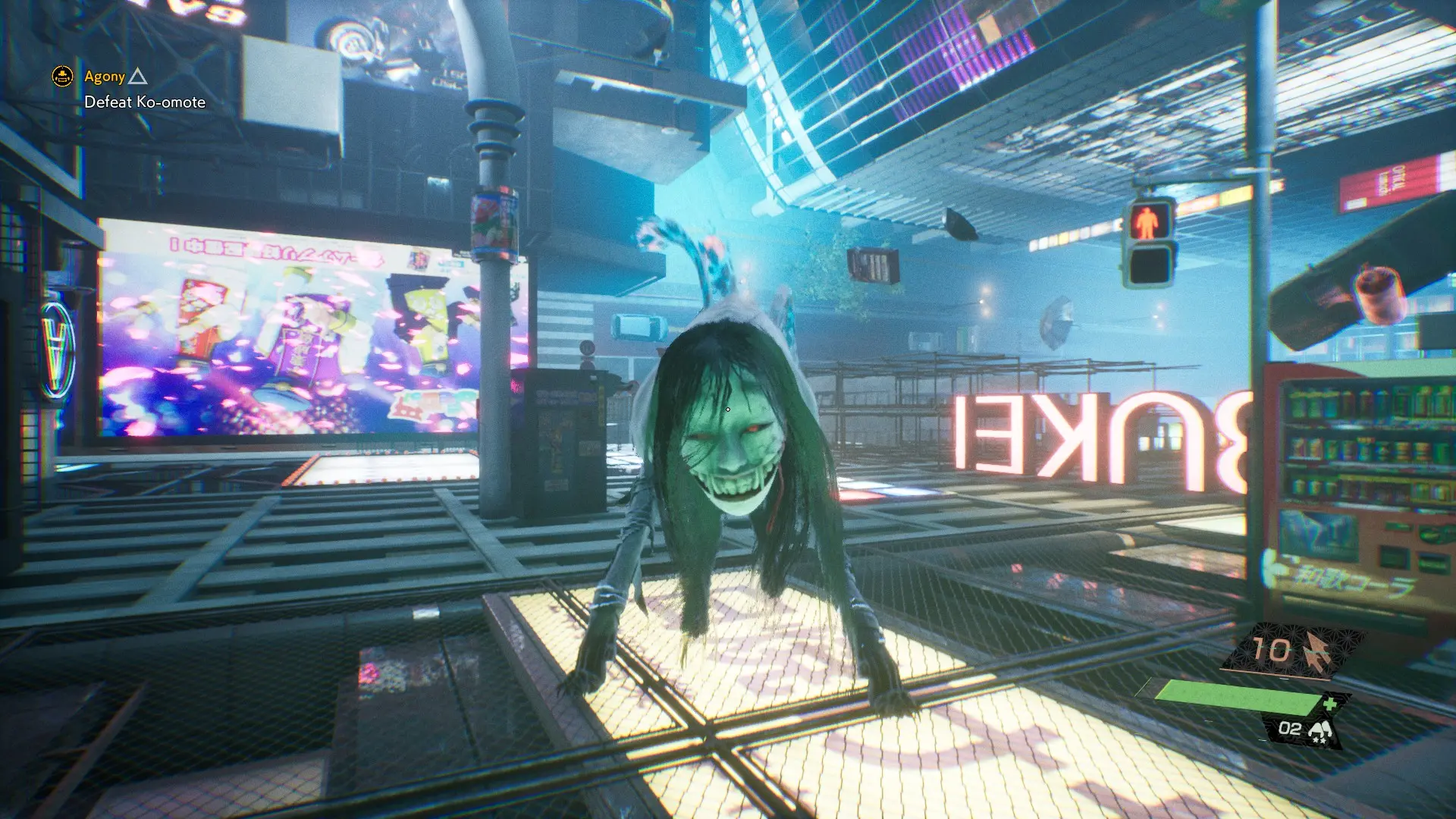
However, Ghostwire: Tokyo doesn't have any major flaws that would make it a huge disappointment. It may not fascinate with its gameplay and repetitive action, but thanks to its excellent atmosphere, impressive realization of Japanese lore, and sometimes, in their simplicity, entertaining combat, it manages to outperform the average with ease. It's just a shame because it could have offered so much more than the ordinary gameplay on display here. On the plus side, the foundation has been laid and hopefully, should the Ghostwire series continue, Tango Gameworks will be able to deliver a much better and more engaging game.
We would like to thank AVE Group for providing the review code.
ΒΑΘΜΟΛΟΓΙΑ - 69%
69%
Tokyo Tales
A rather unusual looking, but very ordinary gameplay, Ghostwire: Tokyo falls into the category of simply "good".














